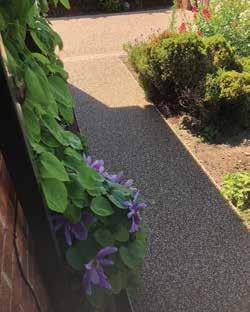
3 minute read
Helping Wildlife: Baby Birds
from Henlow Aug 2020
by Villager Mag
When you spot a baby bird out of its nest, most people’s natural instincts will be to pick them up and help. Perhaps wrap it in a something warm and soft and potentially take it to a local rescue centre or vet. However, this isn’t always the best thing to do. An important factor in deciding the right course of action, is dependent upon whether the bird is a fledgling or a nestling. Also whether the bird is injured. Additionally, are the parents close by? Lots of baby birds end up in our care when kindhearted people have tried to help, but they would have been better left alone. So, when do you intervene and when is it best to leave them alone?
Nestlings
Advertisement
Nestlings are baby birds that do not have any feathers. Therefore, they will not survive for very long outside the protection of the nest. We advise that in this circumstance you take the bird to your nearest wildlife rehabilitator. The two closest to our region would be the one in Royston, Cambridge and another in Wellingborough, Northamptonshire
Fledglings
Fledglings are older than nestlings and have all, if not most of their feathers. They tend to leave the nest just before they are able to fly. We advise that if you come across a fledgling on the ground, out of its nest, it is best to leave it alone. You can observe the fledgling from a distance, as the parents are usually close by. In addition, because the parents will still be feeding the bird it isn’t advised that you remove the bird from its environment. If you feel the fledgling is in immediate danger, you may place it in a sheltered spot close to where you found it. Certainly, do not try to return a bird to the nest as this may disturb the other young birds.
Owlets
You may come across tawny owlets on the ground that are still learning to fly. Again, in most cases it is best to leave them where they are. Amazingly, tawny owlets can climb back up into their nest. So if you discover one under a possible nest site, monitor from a distance to see if the parents are close by. Something else worth noting, is that young Tawny Owls usually leave the nest long before they are actually ready to fly. This means that there is little point in returning such birds back to their nest. Tawny owlets go through a phase called ‘branching’. This is when they walk, climb, jump and flutter around in the trees at night. It is not uncommon for owlets to spend time on the ground during this phase.

If you need to contact our Branch (North Bedfordshire) for any reason we can be reached by the details below, or for an animal welfare issue or emergency, contact 0300 1234 999. Lines are open 7 days a week 24/7. Email: info@rspcabedsnorth.org.uk Tel: 01234 266965 / 01234 930304

We offer the better alternative to a cattery
Telephone: 07947 427543 or view our website: www.HomeLovingCats.com
The professional home cat service for discerning owners
NOT YOUR AVERAGE HOME IMPROVEMENT COMPANY

RESINBOUND DRIVEWAYS • MAINTENANCE AND WEED FREE • HARD WEARING • QUICK INSTALLATION • CAN BE USED AS OVERLAY • BESPOKE DESIGNS • SUITABLE FOR DRIVEWAYS,
PATHS AND PATIOS • 10 YEAR GUARANTEE











